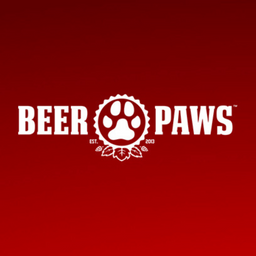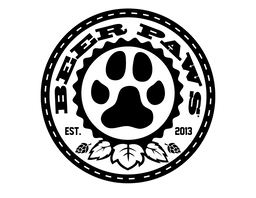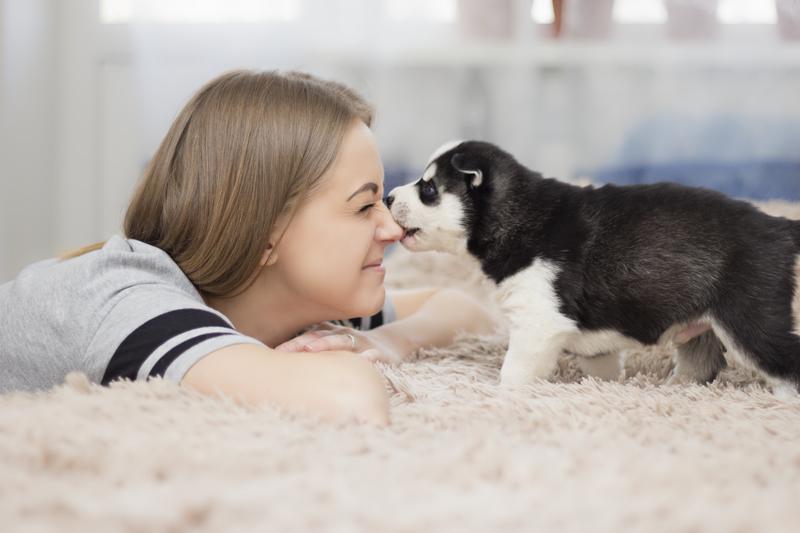Adding a new puppy to your family is an exciting experience. You can expect many years of fun and love as your puppy settles in and bonds with you. However, bringing home a new puppy is not too different from adding a baby to the family. It's important to know what to expect so that you'll be ready for the new arrival.
Puppy-Proofing Your Home
Puppy-proofing your home is an essential part of keeping your new puppy safe. This should be done even before you bring him home to make sure that things are as safe for him as possible. Get down on your hands and knees to view your house from the puppy's perspective. Look for hazards that can harm a curious young pup, such as wires and extension cords within his reach, poisonous house plants, breakable items, and anything he could knock down or drag off a table or other high surface. Anything that could harm the puppy or that he could damage should be moved out of his reach. Remember that the puppy will be teething at some point, and that will inspire him to chew. Move things before he discovers them, to keep both the puppy and your items safe. Puppy-proofing your home will help to keep him out of trouble and prevent him from learning bad habits that he may continue in the future.
Adequate Living Space
You must make certain that your new puppy has enough living space not only while he's a puppy, but also as he grows to adulthood. With all the different breeds of puppies, it is important to take into consideration the activity level of the breed and their need for space. Some breeds don't require a great deal of space, due either to their small size or low energy levels, but other breeds need a lot of room to run, daily exercise, and plenty of playtime. If you love a breed that's active and needs plenty of room but you have a tiny yard or perhaps even live in an apartment, it is still possible to bring home the breed you desire and have him be happy and healthy in your home. The key for active breeds is to find ways to give them a workout even if you don't have a fenced yard to play in. Going to a dog park is one of the best ways to provide running room for your dog. Locate the dog park nearest your home and check it out before you bring home your puppy. It will make it easier for both of you if he has a place to play as soon as he comes home.
Crate Training
Crate training your new puppy is beneficial to both you and your dog. It gives the pup a place where he can feel safe, and it also limits how much of your house he can explore when you aren't able to watch him. At first, you may see the crate as a sort of a jail where your pup is confined part of the time, but, to him, it's more like a little den where he can go to feel secure. Crate training is also an excellent way to housebreak your puppy since even very young dogs want to avoid soiling the place where they sleep. When you take your dog away from home, no matter how old he is, having his crate with him can help him to stay safe in strange situations. It also makes him more welcome in places where dogs may not be at liberty to roam freely, such as motel rooms or at friends' houses. Just be sure that his crate is always a happy place. Give him treats to encourage him to like his crate, and never put him in there as punishment.
Dog Toys
Many dogs love various kinds of dog toys, and they'll carry them around wherever they go, often squeaking them repeatedly as they walk. Dogs differ in how they use their toys. Some treat toys almost like their friends, handling them gently and carefully taking care of them. Other dogs are avid chewers and are hard on their toys. Many toys don't last with tough chewers very long. When selecting dog toys for your puppy, consider his breed as well as his size. When he's a puppy, buy toys that are the right size for him at the time. Check them out for safety, too, so that if he decides to rip them apart, he won't get hurt by anything from inside the toy, such as the squeaker or stuffing. Watch him when he's playing with his toys to make sure he's safe. If you catch him starting to chew on something inappropriate, such as a shoe, take it away and give him a toy instead so that he gets the message that toys are okay to chew on, but shoes are not.
Other Dogs
Depending on how your puppy has been raised, he may love other dogs, or he may try to avoid them. Always be careful when exposing your puppy to new dogs, as it is possible for an older dog to hurt him, and it can happen very quickly. Don't leave a young puppy loose at the dog park around strange dogs. Don't even leave him loose in your home with your own dogs until you are certain that there won't be any fights.
Leash Training
Leash training your puppy is an important part of his upbringing, and you should get him started as early as possible. He may already be used to wearing a collar, but if he isn't, you can put a flat nylon collar on him that is snug enough to stay on even if he pulls back but loose enough that you can easily slip a finger between the collar and the puppy's neck. If you prefer, you can leash train your puppy using an anti-pull harness or a head halter. Flat collars and harnesses can be used on dogs of any size, but typically only large dogs are fitted with a head halter. Whether you choose a collar, harness, or halter, it's important to remember that your dog will respond best to positive reinforcement. Avoid negative consequences or tools, such as pinch collars or shock collars. Instead, teach your dog that it is pleasant and rewarding to do as you ask. Start this way from the beginning, and you won't have to have your pup unlearn bad behaviors.
Positive Reinforcement
Studies show that positive reinforcement that uses rewards creates long-lasting results, while negative reinforcement with punishment is only good for a short time. Show your puppy what you want him to do, and then reward him when he does it. Treats work well as rewards, but petting and praise will also work much of the time, as your puppy wants to please you. Typically, a mix of treats and praise works well for most dogs.
Clicker Training
The use of a clicker is ideal for letting your dog know immediately that he has done the right thing. This is a method used by many trainers of dogs and other animals. Small clickers can be purchased from many different sources, such as larger pet stores, and then held in your hand until it's time for the click. Clicker training involves teaching your dog that the sound of the clicker means he's done what you wanted. Experts advise that the click must always be followed by a treat. The dog learns to pay attention to the click because it predicts a treat. Since you can click faster than you can offer the dog food, clicking provides an immediate response and reinforces positive behavior.
Retractable Leashes
While a retractable leash offers convenience by letting you control how far away from you your dog can be, many experts recommend that you don't use these except under very controlled circumstances, if at all. It allows your dog to get far enough away from you that he can get into trouble before you can stop him. A 6-foot flat nylon or leather lead is best, especially when you're trying to train your puppy.
Car Safety
Teach your puppy right from the start how to ride safely in the car. This means no climbing onto your lap, no running around, and no jumping back and forth from side to side or back to front. Your pup should learn his spot and stay there. Some communities require that dogs wear a safety harness attached to the seat belt. You can also use a crate in the car to keep your dog safe. If he's restrained, he won't interfere with your driving, and he's less likely to be injured or to escape in the event of an accident.
Chew Items
In addition to toys, you might want to give your puppy something to chew on to keep him occupied. Choose carefully, as not everything you can get for your dog is safe. Some types of rawhide bones swell if your dog swallows them, and these have the potential for causing blockage of the digestive system that requires emergency surgery. Never give your dog chicken or pork bones because bones can splinter, especially cooked ones. Also, avoid the hooves that dogs love to chew on, as these can break teeth or end up with sharp edges that can slice your dog's mouth. Instead, look for hard rubber toys for your chewer. Be sure the toy is big enough that your pup can't swallow it. Some toys allow you to fill them with peanut butter or treats, giving your dog something tasty to work on until he gets all the goodies out. Watch for signs of wear, and throw the toy away if it shows signs of damage, such as losing little chunks of the rubber.
Avoid People Foods
If your dog gets the idea that he can beg and be rewarded with a bite of whatever you're eating, you'll never have a moment's peace at mealtime. While the occasional bit of people food isn't likely to harm him, it can disrupt his digestion and interfere with his getting proper nutrition. It's best to stick to a balanced canine diet. In addition, some people foods can kill your dog. Never allow your dog to eat chocolate, raisins, grapes, onions, macadamia nuts, avocado, anything that includes xylitol (an artificial sweetener), or most kinds of seeds and nuts. Check with your vet for a complete list of dangerous foods.
Vaccinations Are Important
Vaccinating your puppy is vital to his well-being. Puppies get immunity from their mothers early in life, but this immunity wears off by the time a puppy is about 16 weeks old. Follow your veterinarian's recommendation for a shot schedule. Your vet will recommend the shots important to your pup in your area. Never skip booster shots, as your puppy could end up with no immunity to some deadly diseases, including parvovirus and distemper.
Teach Manners
Some things that can seem cute when your pal is little can be overwhelming as he grows, especially if he is a large breed. Teach him to stay out of your way so that you aren't tripping on him, don't let him bite you when he's playing, and teach him not to jump up and put his front paws on you. These things can be annoying even if your dog is a small breed.
Join a Class
Take your puppy to a good dog training class. Check with local pet shops or the Humane Society to find a class near you. Many trainers offer puppy socialization classes that will help you introduce him to other dogs, teaching him to behave around strange people and pets.
Regular Vet Checks
You should take your puppy to the veterinarian for regular health checks throughout his life. This starts when your puppy is young and getting his first shots, but he should go to the vet regularly for preventive care even if he's not due for any vaccinations. Vets typically recommend an annual health check for your dog. Be sure to keep to the schedule your vet recommends since these screenings can catch signs of trouble with your pet before it gets out of hand.
Dental Care
An important part of your puppy's routine health care is dental care. This varies greatly by breed and age. Follow your vet's recommendations for brushing your dog's teeth and providing treats that clean teeth and stimulate the gums. Keep any appointments for professional tooth cleaning as your puppy gets older.
Set Up a Playpen
In addition to a crate for confining your puppy, setting up a playpen for your puppy can serve to keep him out of trouble by restricting the area he's allowed to explore. The playpen offers more room than a crate, so he can wander a bit and play with his toys, but it will keep him out of trouble. Portable fencing made of joined wire panels can be set up in a circle to form a playpen or stretched across doorways of forbidden rooms.
Protect Furniture
Ideally, your puppy will be kept away from all furniture until he's done teething, but this is not usually possible. Also, even a dog that's done teething may chew on table or chair legs or on other furniture, drapes, and anything else he can reach. Spray anything the puppy might damage with a good deterrent, such as bitter apple, which is available at most pet stores. He won't like the way things taste with the spray on them, so he'll stick to his toys.
Potty Training
Keeping your puppy in his crate when you can't be watching him helps with potty training, as he's likely to wait until you take him out before relieving himself. Also, take him out at regular intervals, such as right after eating and every few hours throughout the day. As he gets older, you can extend the time between outings.
Food
Feed the new puppy a good-quality puppy food that will support him as he grows. Ask your vet for suggestions. Different breeds have different nutritional requirements. Also, follow the recommendation of your veterinarian regarding how often and how much to feed him.
Water
Having access to water at all times is ideal for all dogs, but it may not be practical if your puppy is shut in his crate part of the time. Offer him a drink every time you take him out of the crate. Make sure that the water is fresh and the bowl is clean.
Dishes
Your puppy needs dishes of his own for his food and water. If you have other pets, he can share a water dish, but don't try to make your pets share food bowls since this can lead to fights. Stainless steel bowls are ideal for keeping your dog healthy since they harbor fewer bacteria than other types of dishes and are unbreakable.
Introducing the New Puppy
When you first bring home your new puppy, other pets in your home are unlikely to be happy about it. Treat your other pets like royalty when you introduce your new puppy, making sure that you keep the puppy from pestering them. They are less likely to resent the new member of the family if you show the existing members that they are still very important and that they have not been replaced by the new puppy.
Bringing home a new puppy requires some planning and effort, but if it's done carefully, you can expect great results. You'll have a puppy that's healthy, happy, and easy to live with. Be prepared for a few mistakes. But, overall, the experience should be positive for you, your family, your new puppy, and any other pets in your home. Enjoy your new furry family member!
To pamper your new dog, try getting them some of these tasty treats!




